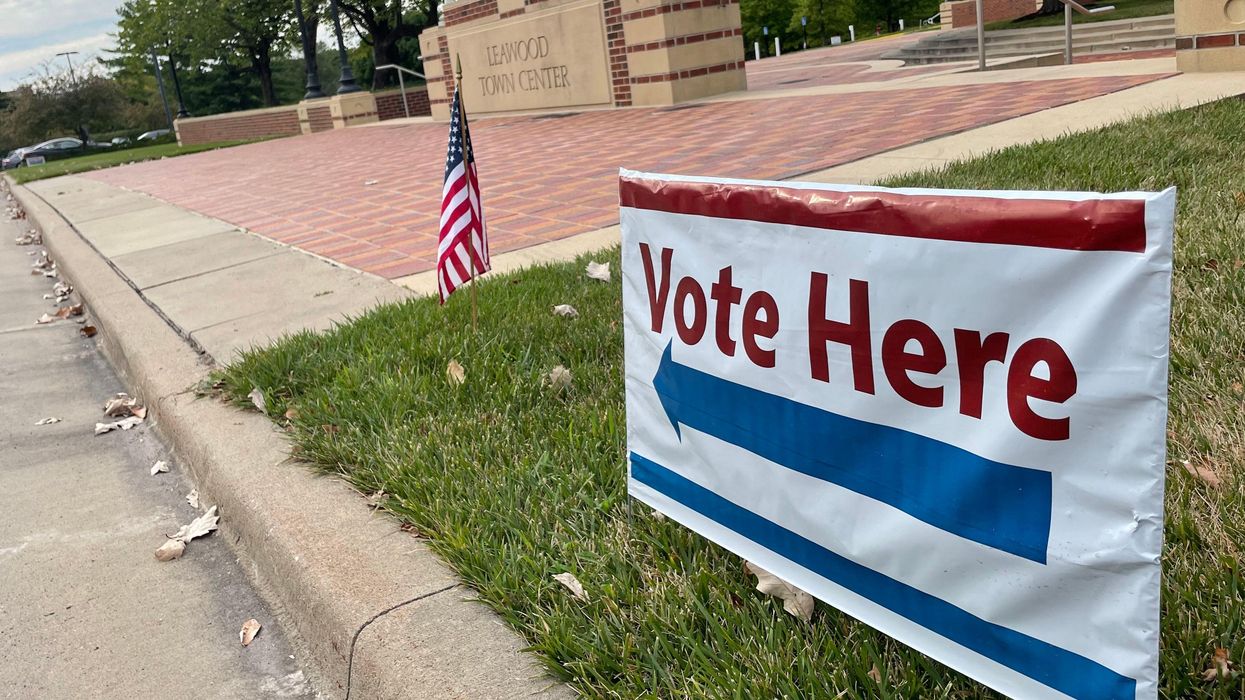Claudia, an immigrant from Chile who lives in suburban Maryland right outside Washington, D.C., watched closely as the Trump administration ramped up its mass deportation campaign during the spring (Claudia, not her real name, asked to be identified by a pseudonym because she is afraid of federal immigration agents).
She went online and watched countless videos of masked, heavily armed Immigration and Customs Enforcement (ICE) agents breaking the car windows of immigrants to wrestle them out of their cars, and detaining people at their workplaces, like restaurants, car washes, and agricultural fields. Many of her friends told her about ICE sweeps in heavily Latino apartment complexes near her home.
While Claudia is a naturalized citizen with full legal status to be in the United States, in April, she started carrying her passport in her car in case ICE agents confronted her. Claudia works for herself, cleaning houses and individual apartments, and has never been in trouble with the law. Still, because she “looks” Latina, with darker features than some fair-skinned Latinos, she believes ICE agents would target her for questioning and even detainment if their paths should cross.
“They (ICE agents) are racial profiling,” Claudia tells palabra. “I feel this about people who are in office trying to make this country white. Every week, something happens to good people who are just trying to work. At this point, I don’t feel safe even with my passport. They’ve picked up citizens. ICE agents are acting with a lot of hate. They don’t care if you show them a passport; they don’t want to see it. They’re using violence against people walking on the street or driving in their cars.”
Asked for a response about the fear experienced by many people who are in the country legally, the ICE press office provided this comment via email:
“In the United States, immigration laws mandate that all non-U.S. citizens carry proof of their authorization to be in the United States. This requirement, rooted in the Immigration and Nationality Act, emphasizes the importance of having immediate access to documentation that verifies one’s right to be in the U.S. Whether you are a visitor, a student, or a permanent resident, understanding and complying with this law is crucial for navigating daily life in the United States without legal complications. Stating that a fear of law enforcement is the main reason for carrying such documents, which are required by law, is like saying the reason you carry a driver’s license on your person while driving a vehicle is because you are afraid of the police. Bottom line: it's the law. What makes someone a target of ICE is if they are illegally in the U.S. — NOT their skin color, race, or ethnicity.”
White House Border Czar Tom Homan said in an interview earlier this year that ICE agents don’t need probable cause to detain people briefly, explaining that an individual’s appearance is reason enough for immigration officers to detain someone.
“People need to understand, ICE officers and Border Patrol do not need probable cause to walk up to somebody, briefly detain them, and question them,” Homan said on “Fox and Friends.” “They just go through their observations, get articulable facts, based on their location, their occupation, their physical appearance, their actions.”
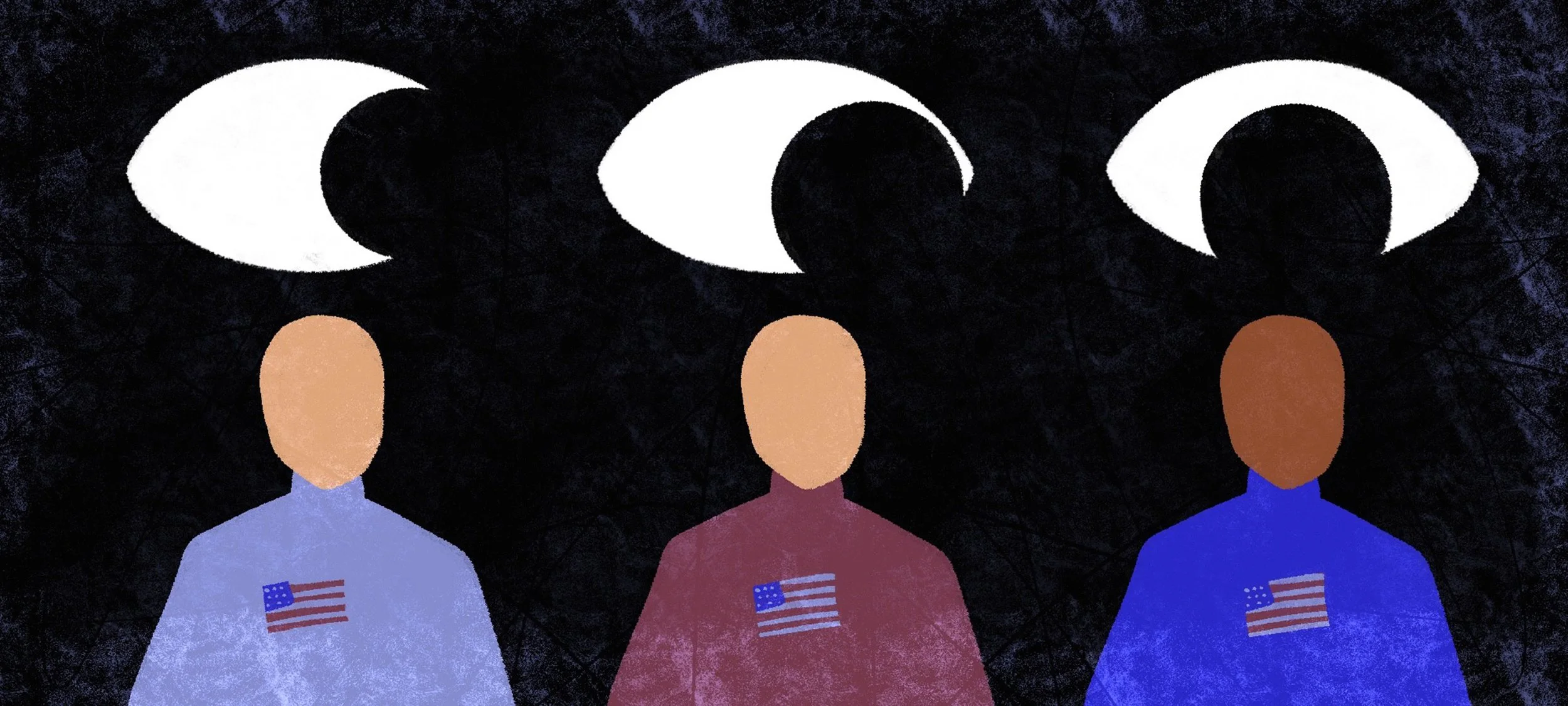
Illustration by Olivia Abeyta for palabra
There are countless examples on YouTube, on X (formerly Twitter), and on TikTok of ICE agents aggressively questioning – and sometimes handcuffing and detaining – people who are in the country legally.
ICE agents have detained U.S. citizens as well as permanent legal residents.
Some examples:
- In early August, ICE agents conducting a raid at a car wash in Anaheim, Calif., about 26 miles southeast of Los Angeles, tackled and detained U.S. citizen Isaac Domínguez. Domínguez told the local NBC affiliate and KCAL News that he was driving to the car wash when he saw ICE agents and pulled over. “That’s when I got upset because I think to myself, they’re just attacking Hispanic people. They tackled me to the floor and put the cuffs on me, hands behind my back.”
A Department of Homeland Security official released a statement accusing Domínguez of tossing an object at a government law enforcement vehicle and of trying to punch ICE agents who approached him, which he denies. After several hours, authorities released him without any charges.
- In June, ICE agents in Los Angeles detained U.S. citizen Andrea Vélez. The woman said her mom and sister dropped her off on a downtown street where masked, plainclothes men were “going after” people. One of them grabbed her, and when she tried to tell him she’s a U.S. citizen, he accused her of impeding him. When she asked for his badge number or identification, he responded that she didn’t need to know any of that, she said in an interview with the Los Angeles NBC affiliate.
Vélez said she told other ICE officers she is a U.S. citizen and showed them her real ID, but they didn’t believe her. A report on the news program Democracy Now! showed video of an ICE agent carrying Vélez, who is 4’11. She spent two days in a detention center and had nothing to drink for 24 hours. In a criminal complaint, federal prosecutors alleged Vélez stepped into an agent’s path and extended an arm in an apparent attempt to prevent an ICE agent from catching a man he was chasing. Authorities released her after 48 hours, and prosecutors dropped the charge against her.
- In April, at the request of federal immigration officials, authorities in Florida held Juan Carlos López-Gómez in a local jail in Leon County, which is in the Florida Panhandle region. Local authorities detained him even after his mother presented his birth certificate and Social Security information to a local judge. Florida Highway Patrol officers, who have been deputized by Gov. Ron DeSantis to conduct immigration enforcement, acted on a request by ICE and took the 20-year-old to jail following a routine traffic stop for speeding - he was a passenger in the car and was coming to Florida from Georgia for work. López-Gómez was born in Georgia.
He was released after the case received widespread media coverage.
ICE’s aggressive tactics have even sparked fear among some non-Hispanic, white immigrants who are in the country legally.
For example, Katia, a white South African immigrant who is a naturalized citizen and lives in Fairfax County, Va., says ICE’s approach prompted her in recent months to always carry her U.S. passport inside her bag. (Katia is not her real name; like Claudia, she asked to be identified by a pseudonym because she fears retaliation from ICE). She worries about how an ICE agent would react if they heard her speak and noticed her South African accent.
Katia, who is in her 50s, works in communications for a social justice organization. She came to the U.S. in the early 1990s and became a naturalized citizen in 1994.
She says that the type of tactics ICE is currently using was common in South Africa, which had an apartheid government at the time she emigrated to the U.S. “It was common practice for (South African) authorities to pull people off the street and ship immigrants off to their home countries. I didn’t think I’d ever see that happen in the U.S.”
When she became a U.S. citizen, “Americans were so lovely to me. People I would tell would give me a hug,” she says. “Randos would congratulate me. It seemed they were touched that I would want to become an American citizen. I don’t feel that way anymore.”

Illustration by Olivia Abeyta for palabra
The Trump administration’s mass deportation program is not the first time the U.S. government has carried out a campaign to expel immigrants on a mass scale.
In 1954, President Dwight D. Eisenhower launched “Operation Wetback” to send Mexican immigrants, including some who were American citizens, to their native country. Border Patrol officers carried out the program, which lasted several months. At the time, Border Patrol officers claimed that 1.2 million people of Mexican descent were either arrested or left the U.S. on their own, but some researchers believe that number was exaggerated, and that the true number was in the hundreds of thousands.
The federal government at some point will pay a steep price in court for the overzealous tactics of ICE and the Border Patrol, a civil rights attorney says.
"The U.S. government will face significant financial liability in court for ICE’s aggressive tactics, says Cary J. Hansel, a civil rights attorney in Baltimore. Hansel adds that civil lawsuits on behalf of those unlawfully detained by ICE, alleging ICE is violating the 14th Amendment – which grants citizenship to all persons born or naturalized in the U.S. and provides “equal protection under the law” in addition to prohibiting the government from depriving individuals of due process – will lead to large jury verdicts or settlements.
“There will be a tremendous price to pay for this kind of lazy and unconstitutional conduct. In a democracy that values freedom, people should not have to show their papers to prove they belong. This conduct turns the Constitution on its head.”
Ruben Castañeda is a Washington, D.C.-based journalist with more than three decades of experience as a reporter and an editor.
Proof of Citizenship, No Proof of Safety was originally published by Palabra and is republished with permission.





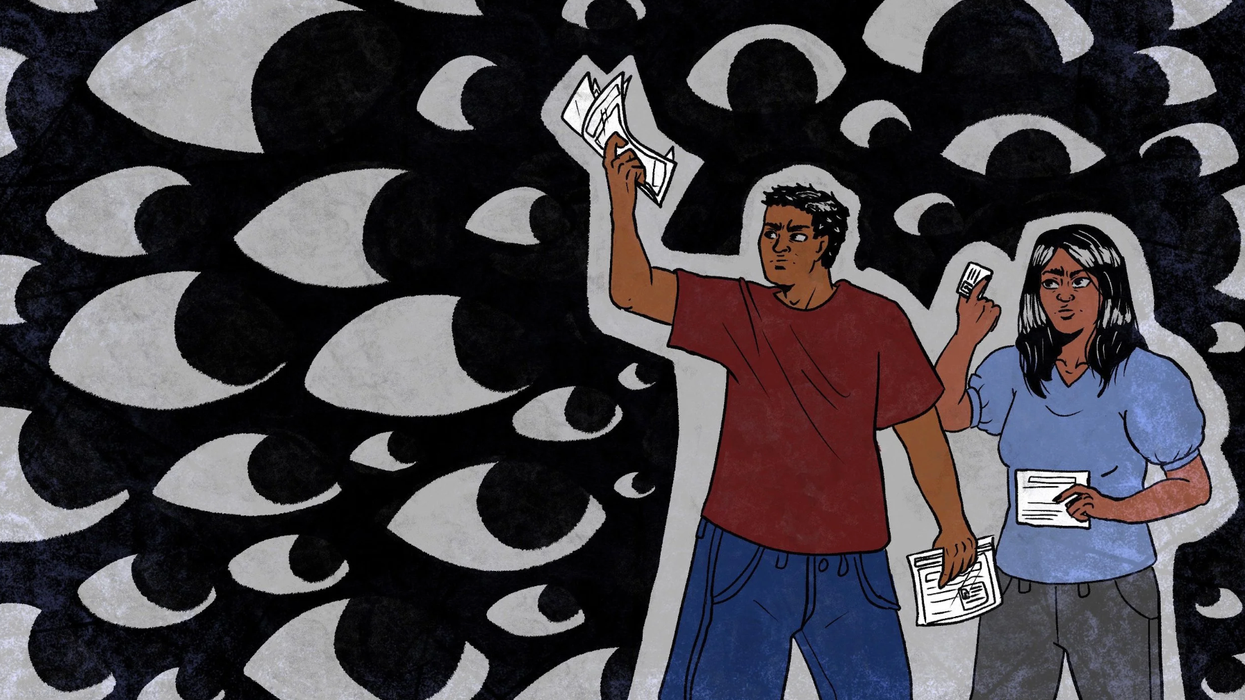




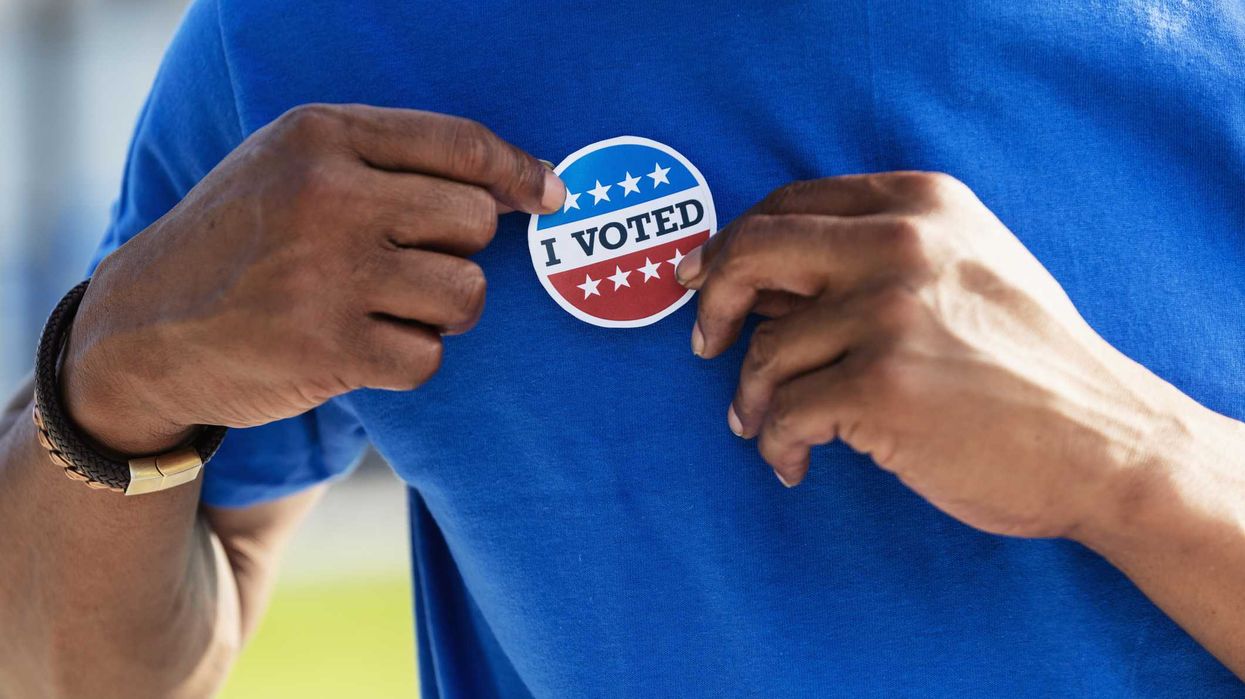






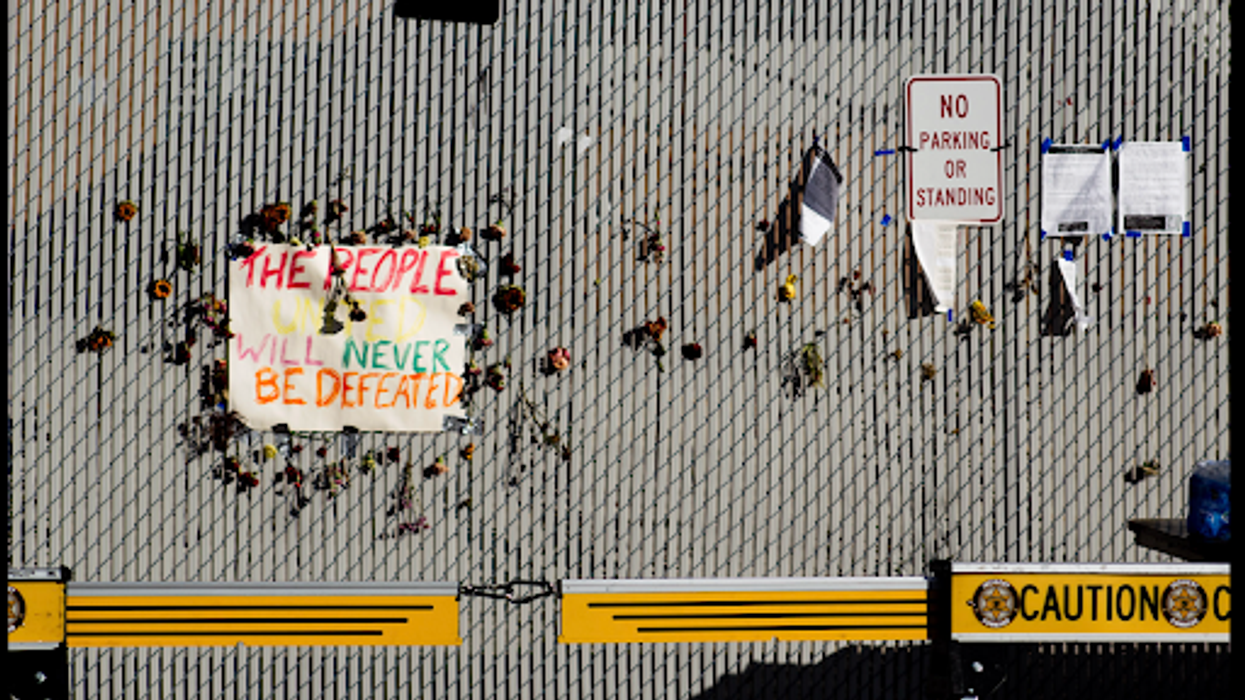
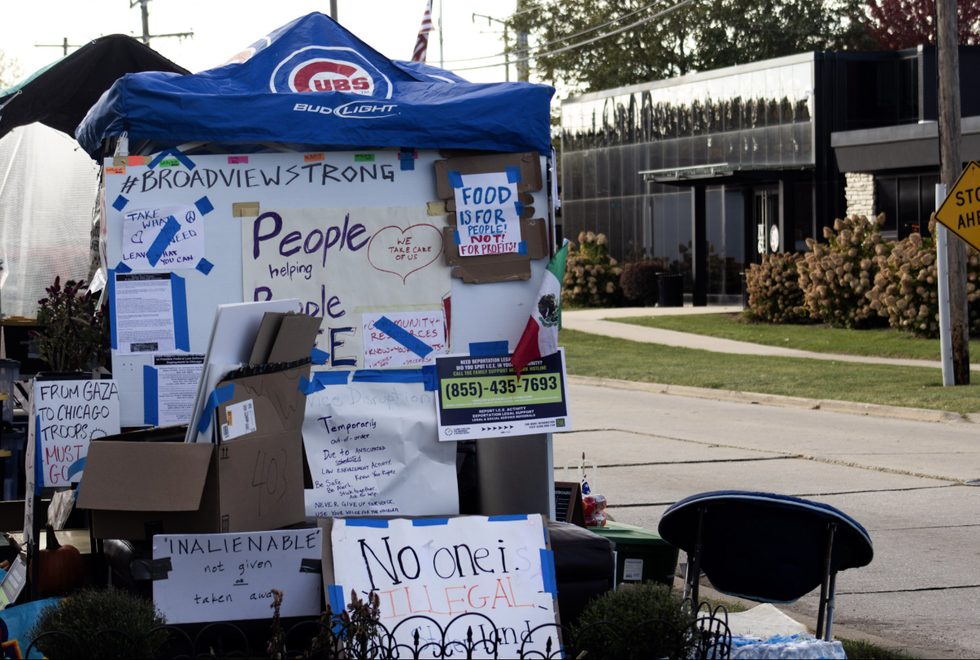 Protest signs and resource information posters were hung up around a resource tent in Broadview, Illinois. Credit: Britton Struthers-Lugo, Oct. 30, 2025.
Protest signs and resource information posters were hung up around a resource tent in Broadview, Illinois. Credit: Britton Struthers-Lugo, Oct. 30, 2025. Rubber bullet wounds on Bryan’s back, after a day of protesting at the Broadview ICE facility in mid-September. He wears hospital scrubs, acquired after receiving medical attention following the pepper-spray incident earlier in the day. He returned to protest after being discharged from the hospital.Credit: Adriano Kalin (@adriano_kalin).
Rubber bullet wounds on Bryan’s back, after a day of protesting at the Broadview ICE facility in mid-September. He wears hospital scrubs, acquired after receiving medical attention following the pepper-spray incident earlier in the day. He returned to protest after being discharged from the hospital.Credit: Adriano Kalin (@adriano_kalin). ICE officers gathered outside the Broadview detention center. Yellow identifying badges can be seen on the front of their uniforms and on their shoulders. Credit: Britton Struthers-Lugo, Oct. 30, 2025.
ICE officers gathered outside the Broadview detention center. Yellow identifying badges can be seen on the front of their uniforms and on their shoulders. Credit: Britton Struthers-Lugo, Oct. 30, 2025.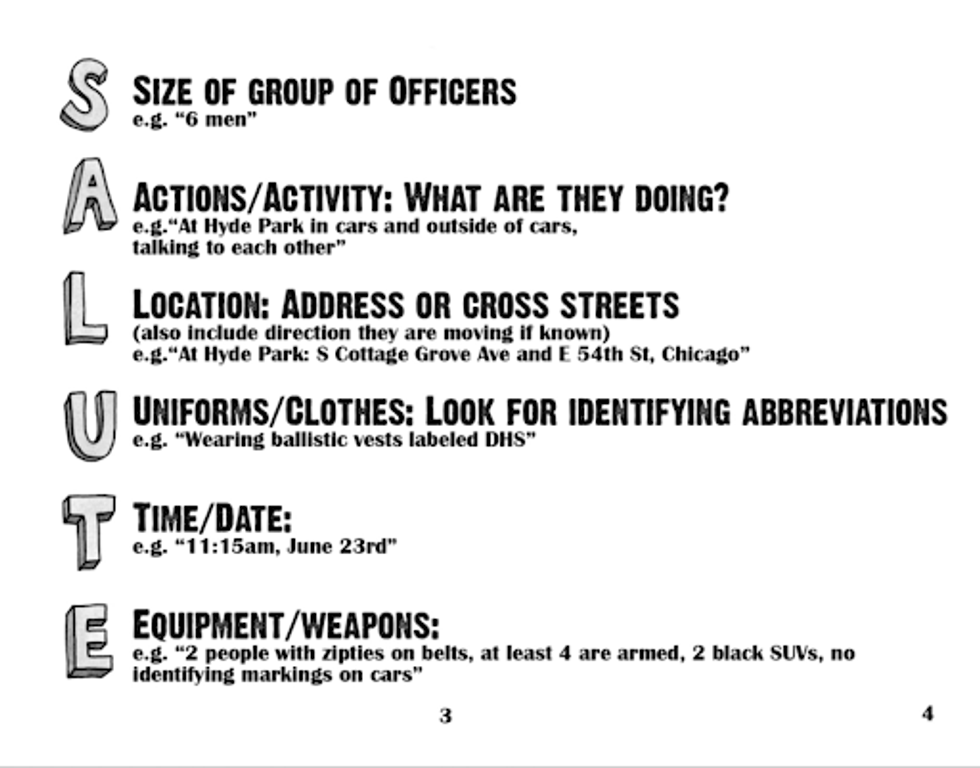 Screengrab from the Chicago Council of Lawyers. Designed by
Screengrab from the Chicago Council of Lawyers. Designed by  A white bus waits outside the Broadview Detention Center to transport detainees to a permanent detention center or to an airport. The Broadview Detention Center cannot hold detainees for longer than 12 hours, though to reflect increased enforcement operations this has been increased to 72 hours. Longer stays have been recorded since Operation Midway Blitz. Credit: By Britton Struthers-Lugo, Oct. 30, 2025.
A white bus waits outside the Broadview Detention Center to transport detainees to a permanent detention center or to an airport. The Broadview Detention Center cannot hold detainees for longer than 12 hours, though to reflect increased enforcement operations this has been increased to 72 hours. Longer stays have been recorded since Operation Midway Blitz. Credit: By Britton Struthers-Lugo, Oct. 30, 2025. A paper outlining resources and ways to report federal law enforcement activity around Chicago hangs on a gate in the protestor “free speech zone”.Credit: Britton Struthers-Lugo. Oct. 30, 2025.
A paper outlining resources and ways to report federal law enforcement activity around Chicago hangs on a gate in the protestor “free speech zone”.Credit: Britton Struthers-Lugo. Oct. 30, 2025.
